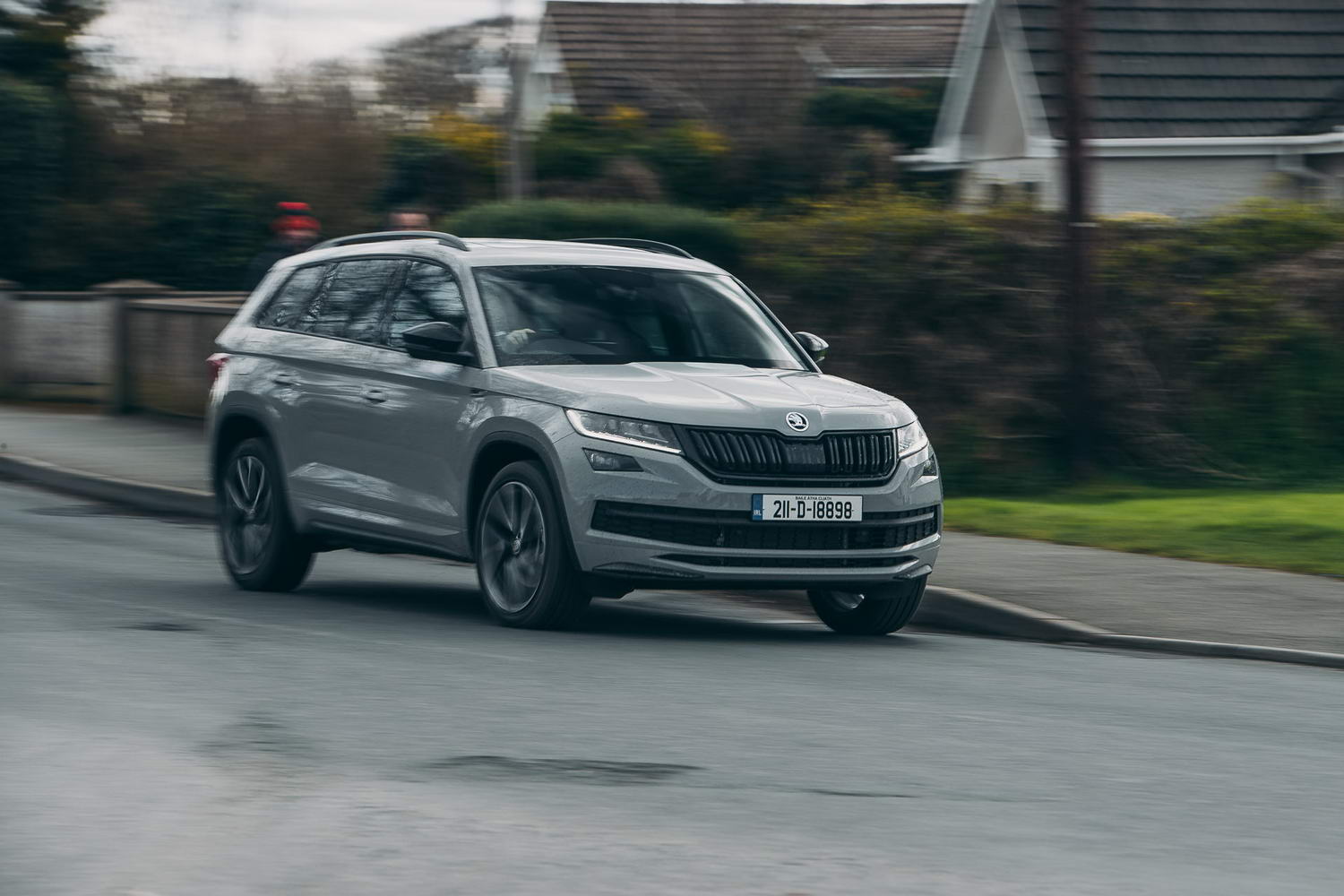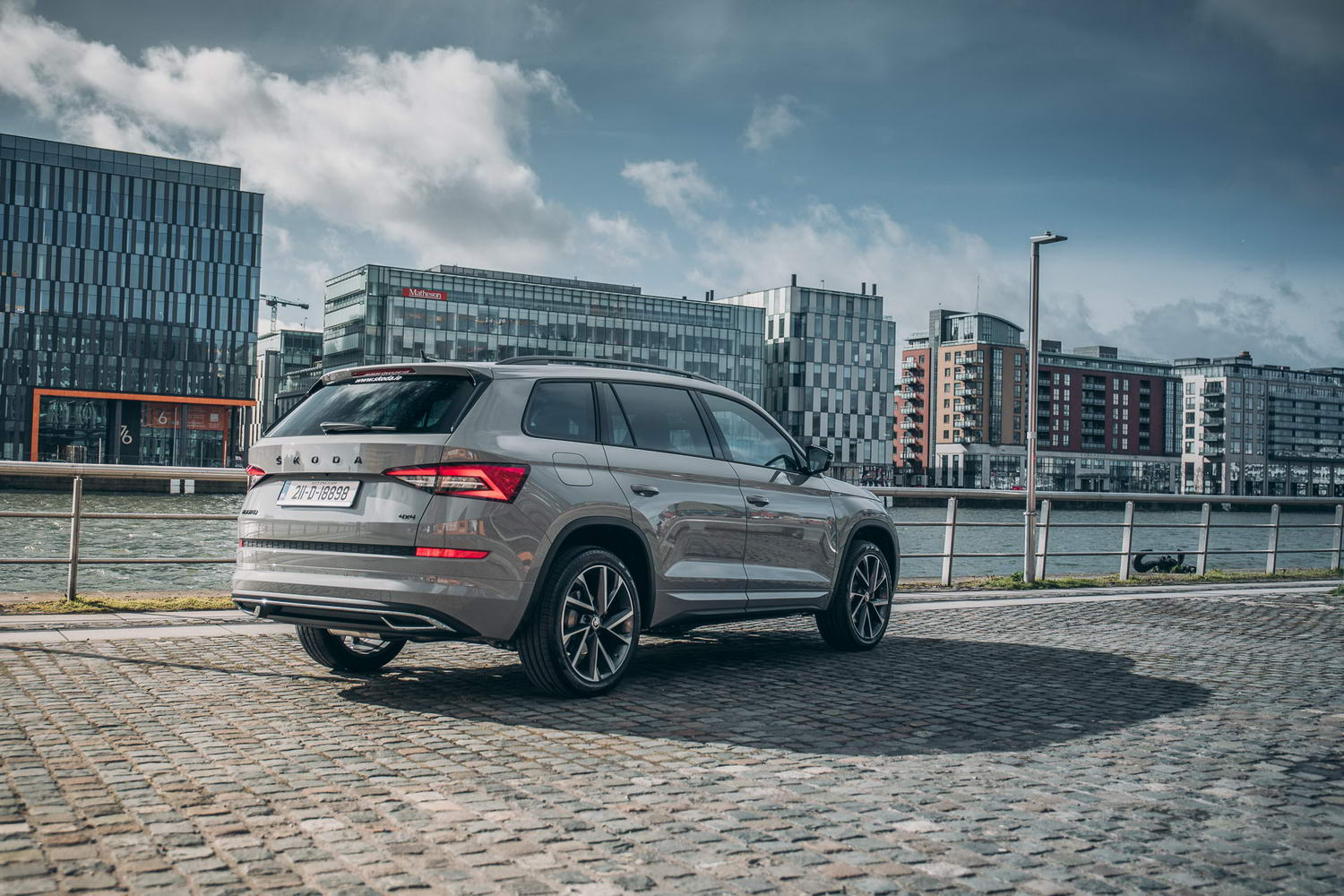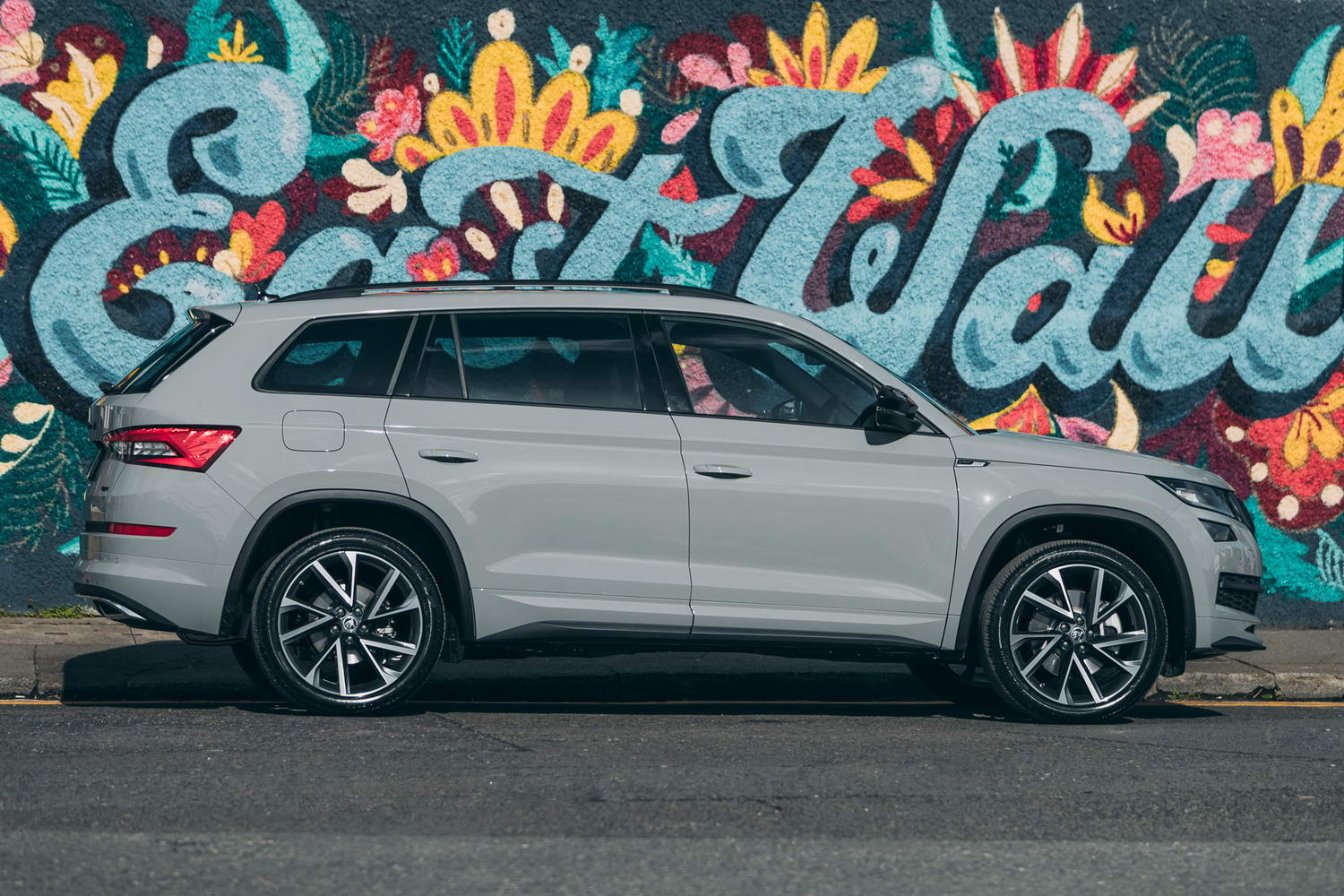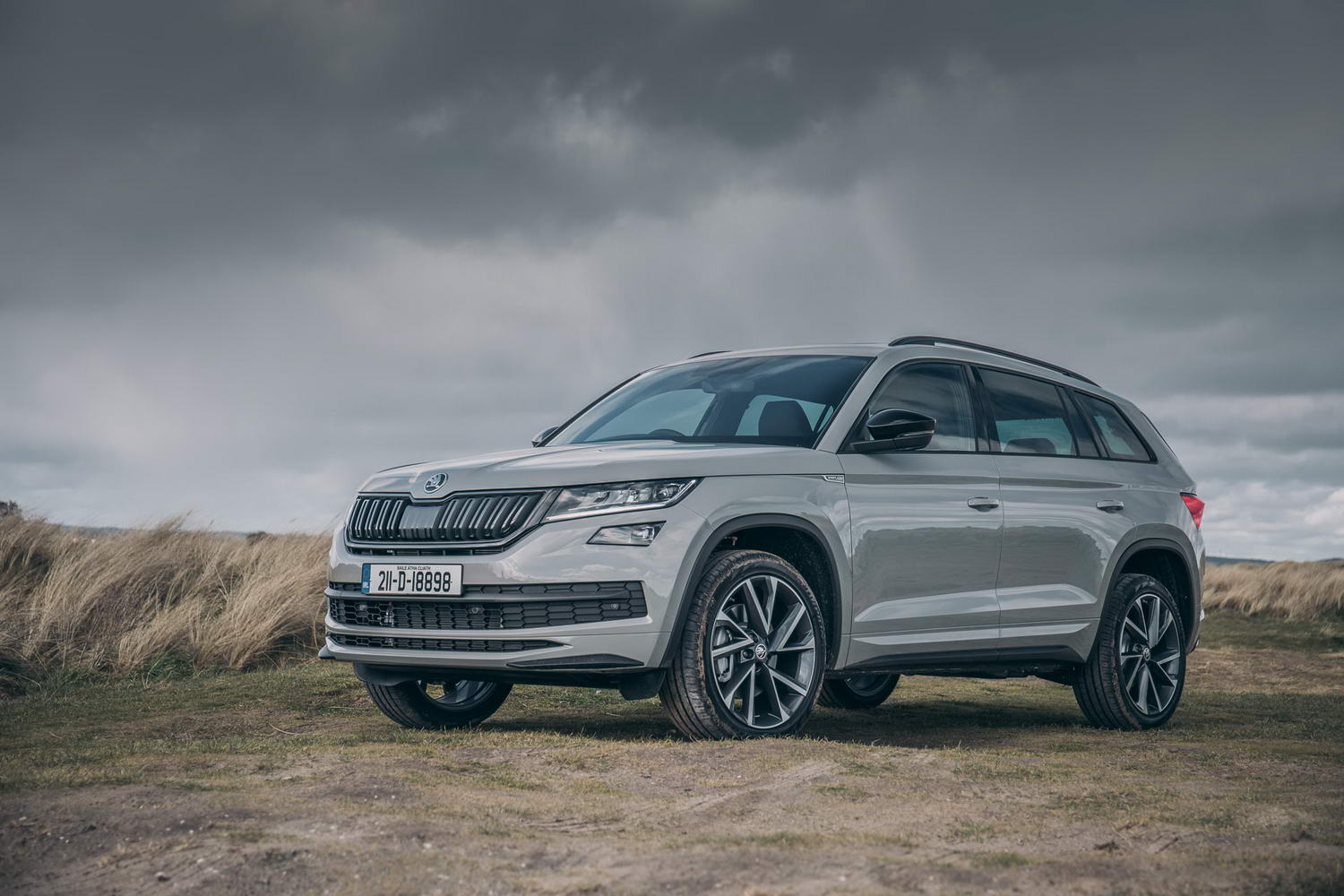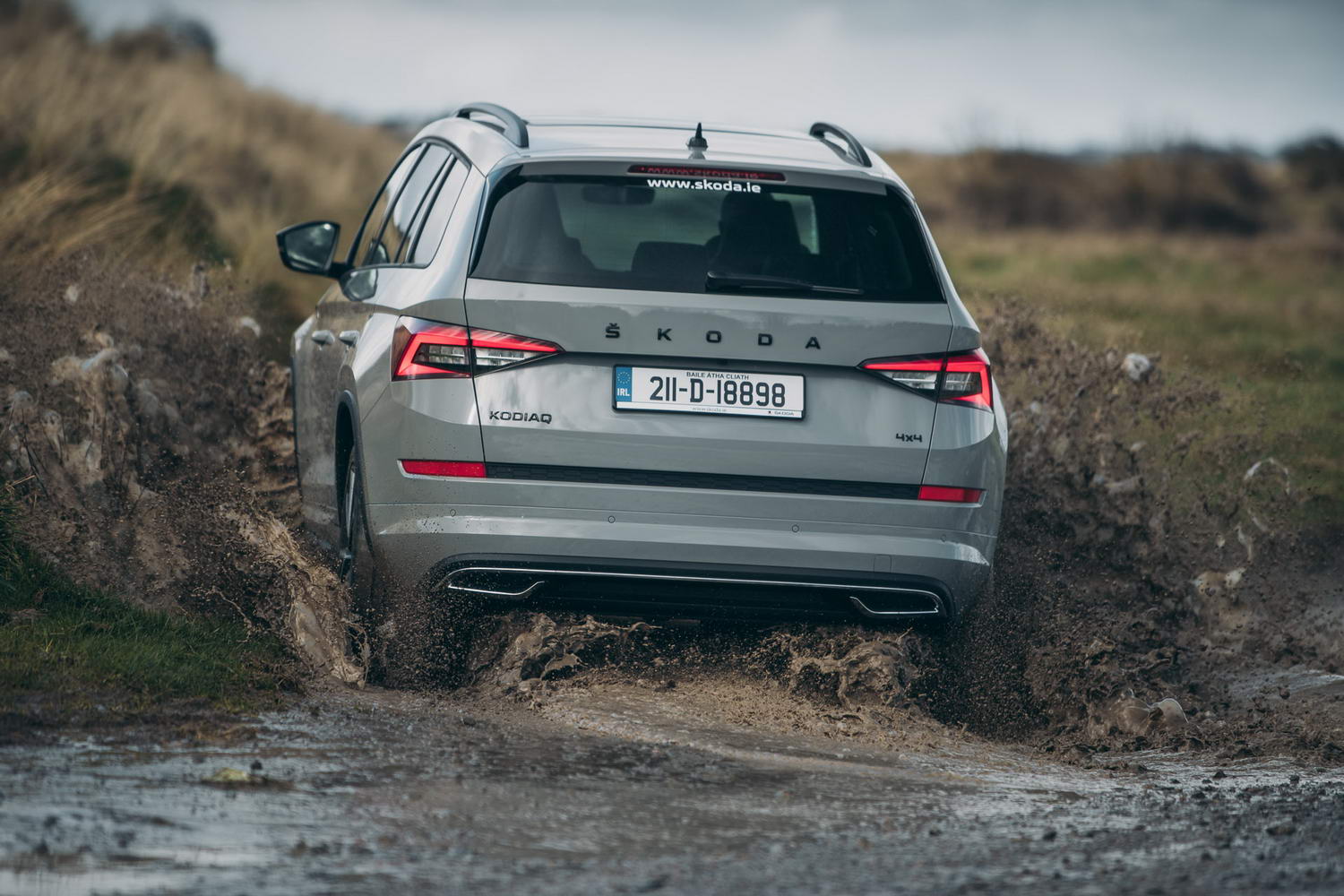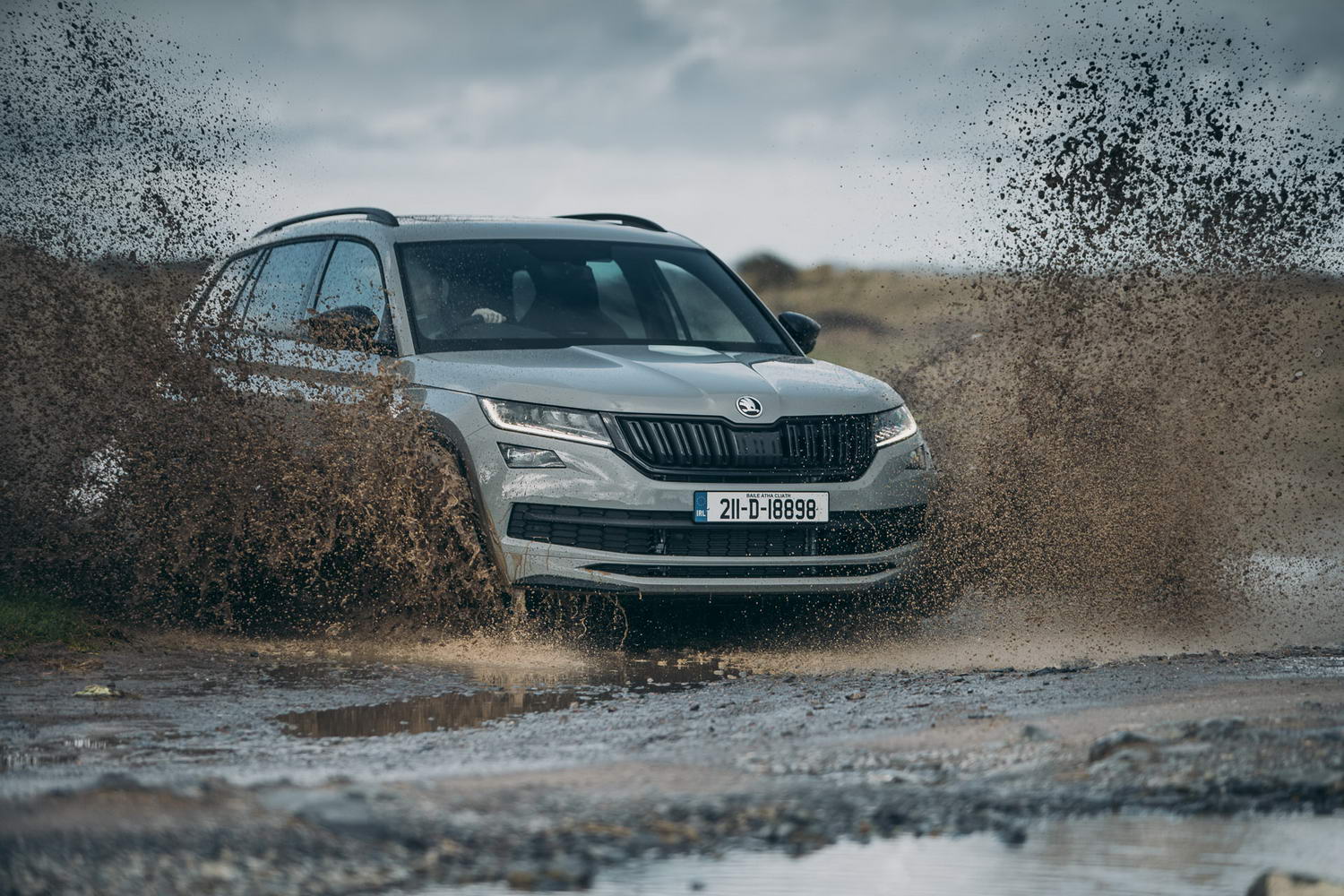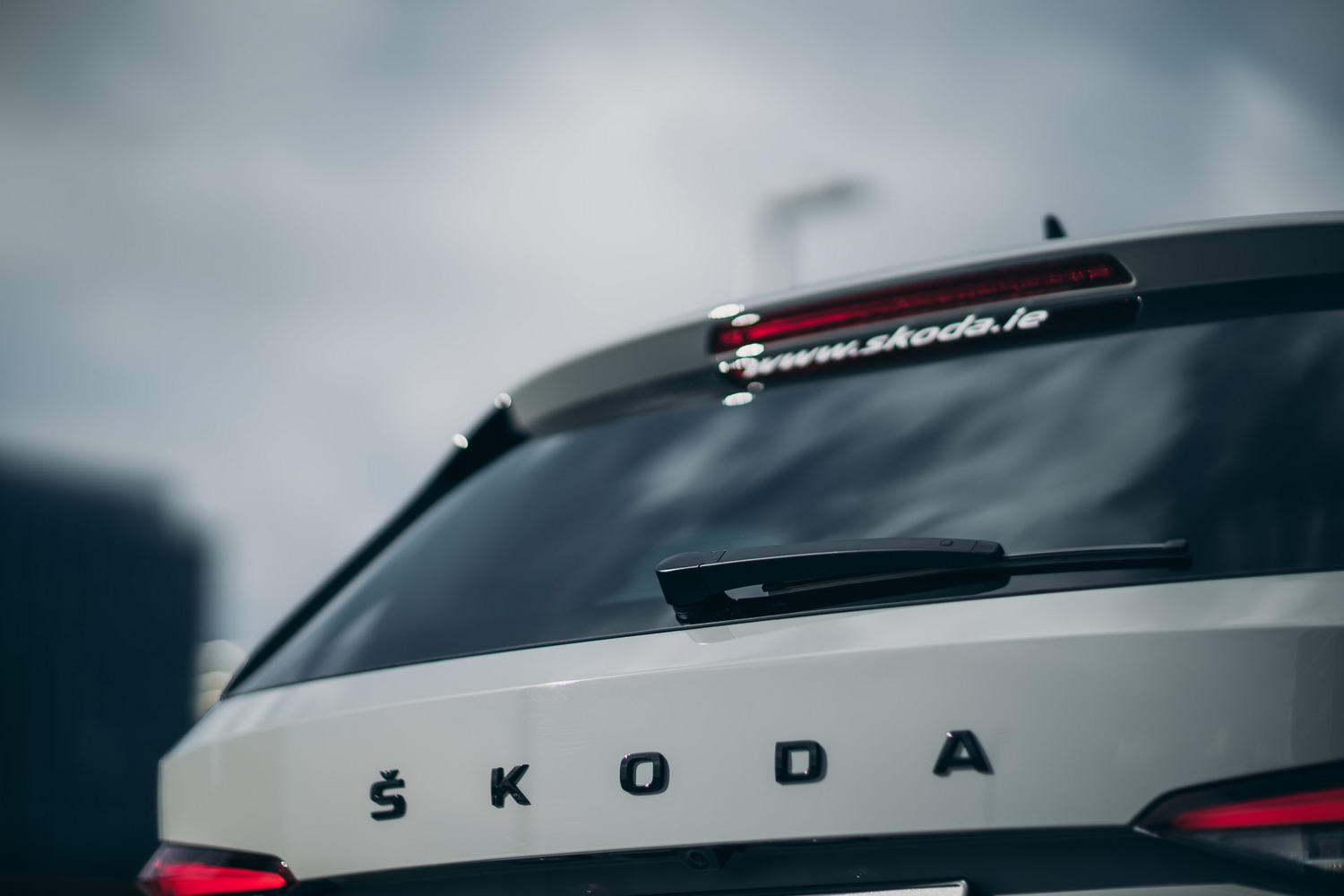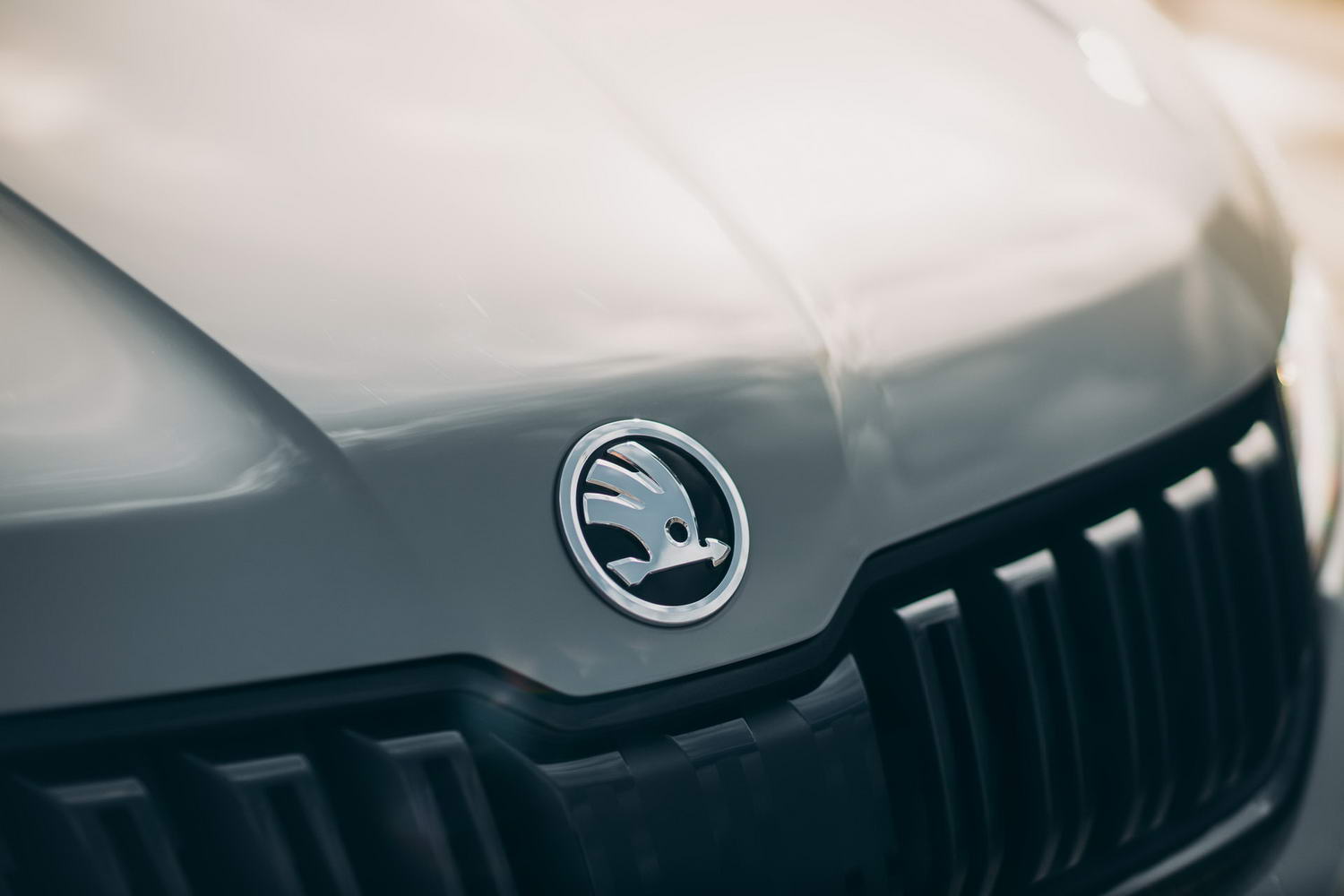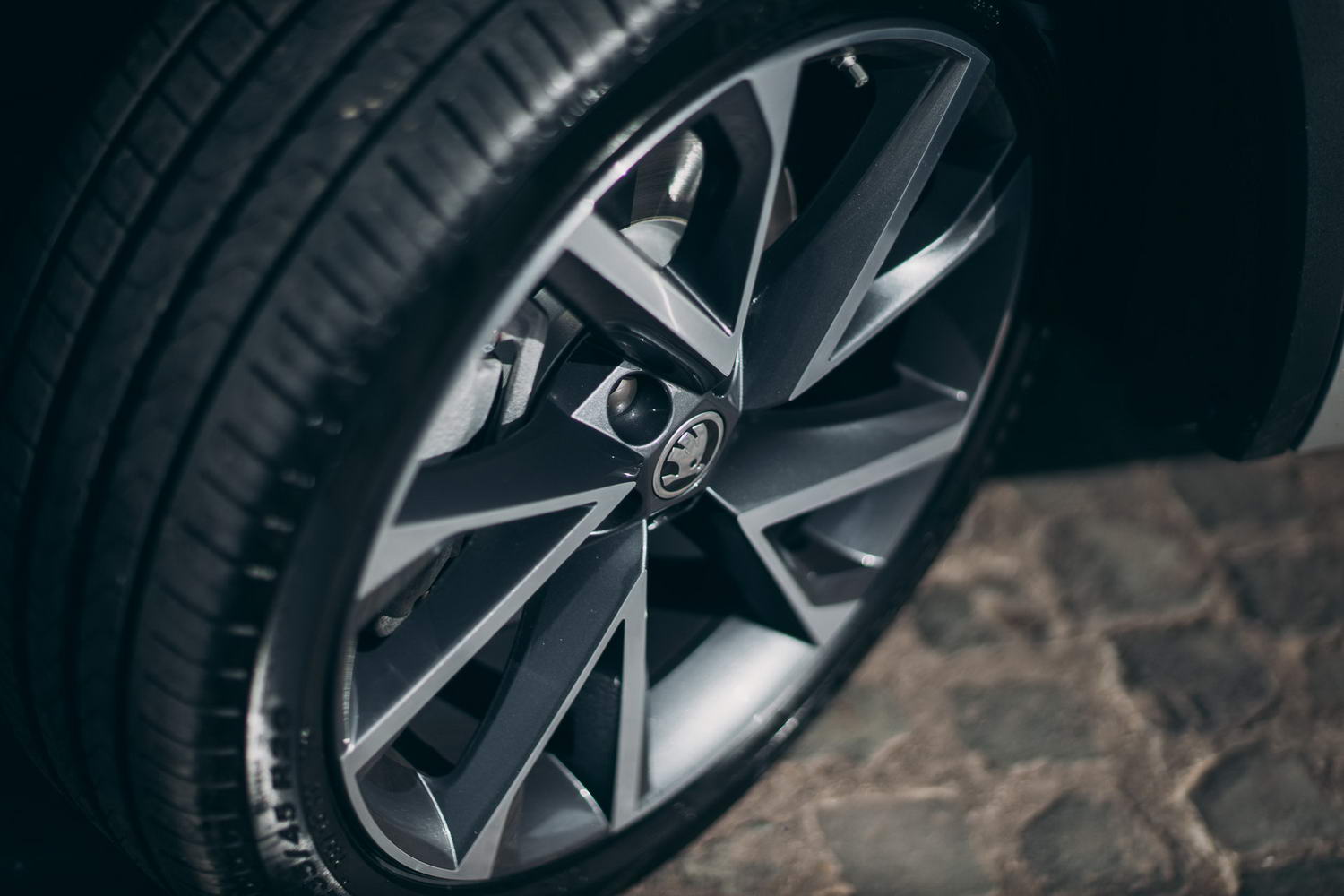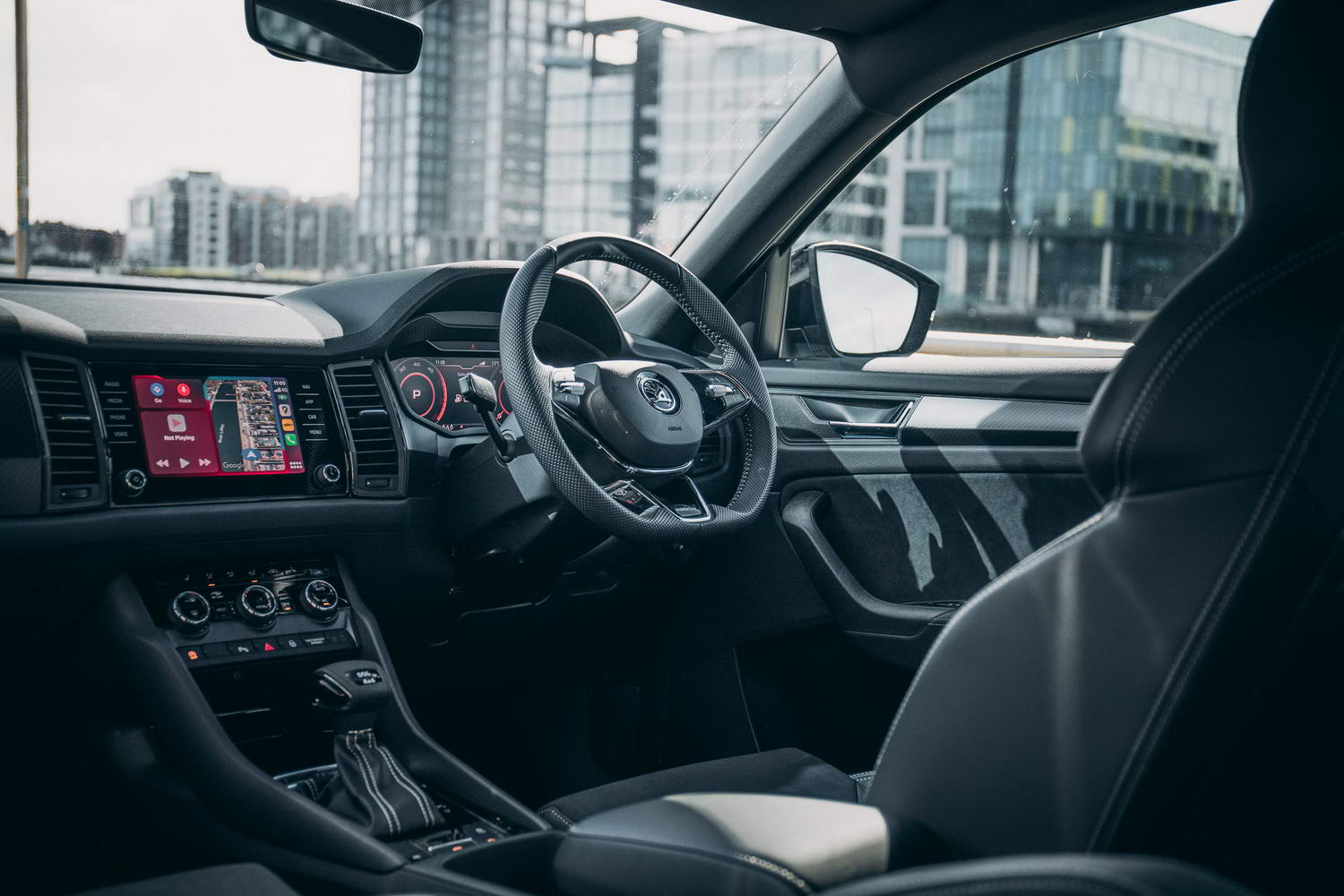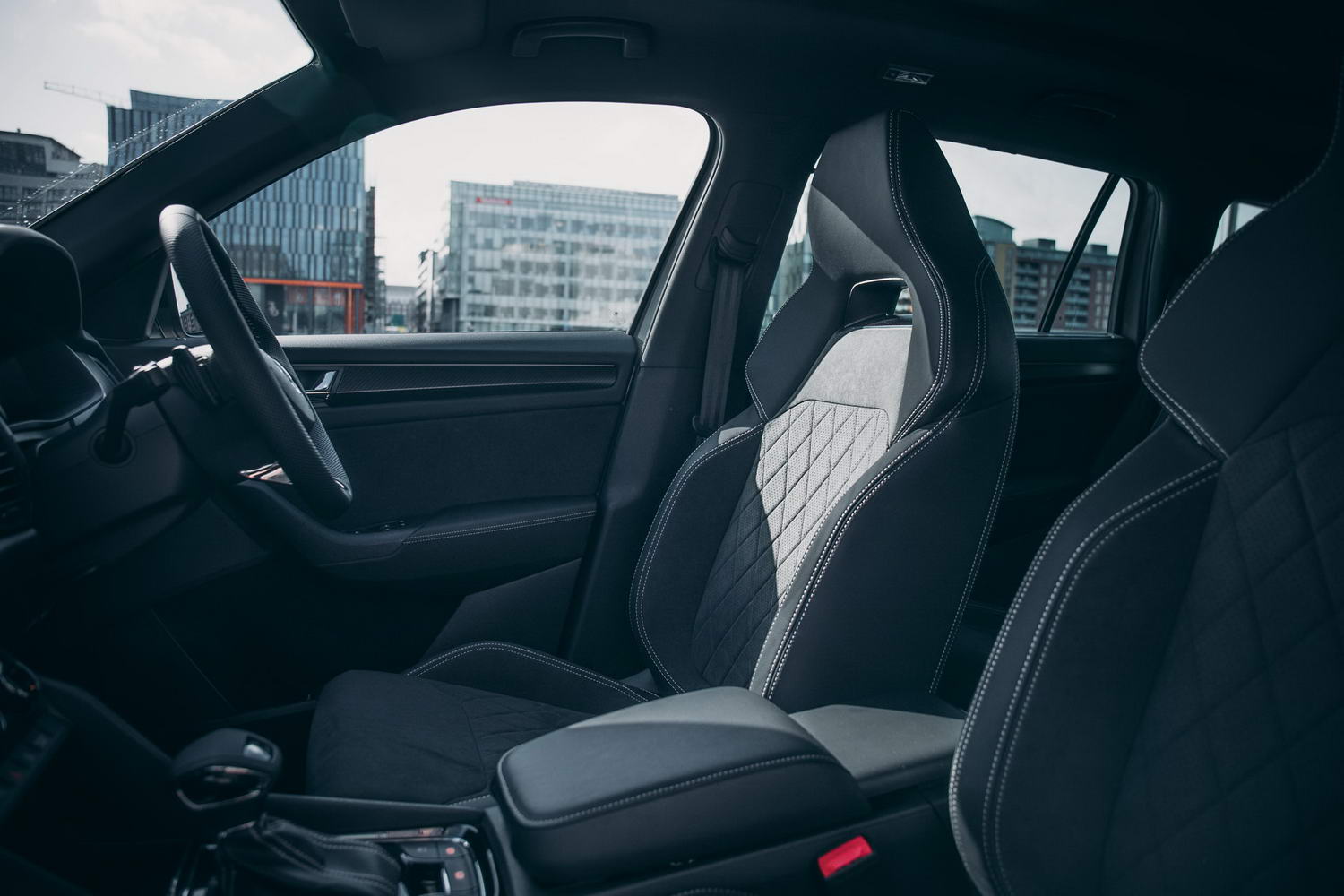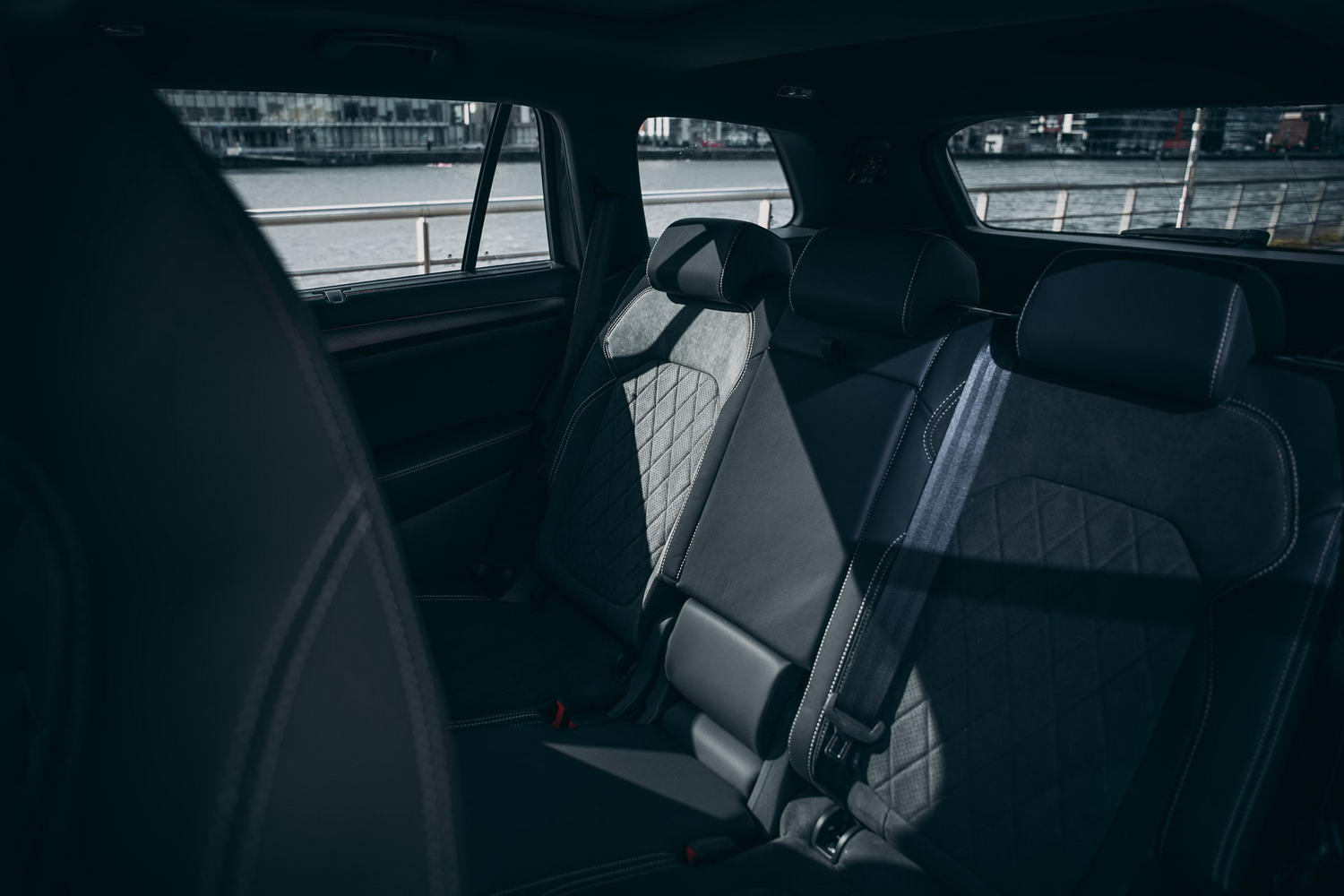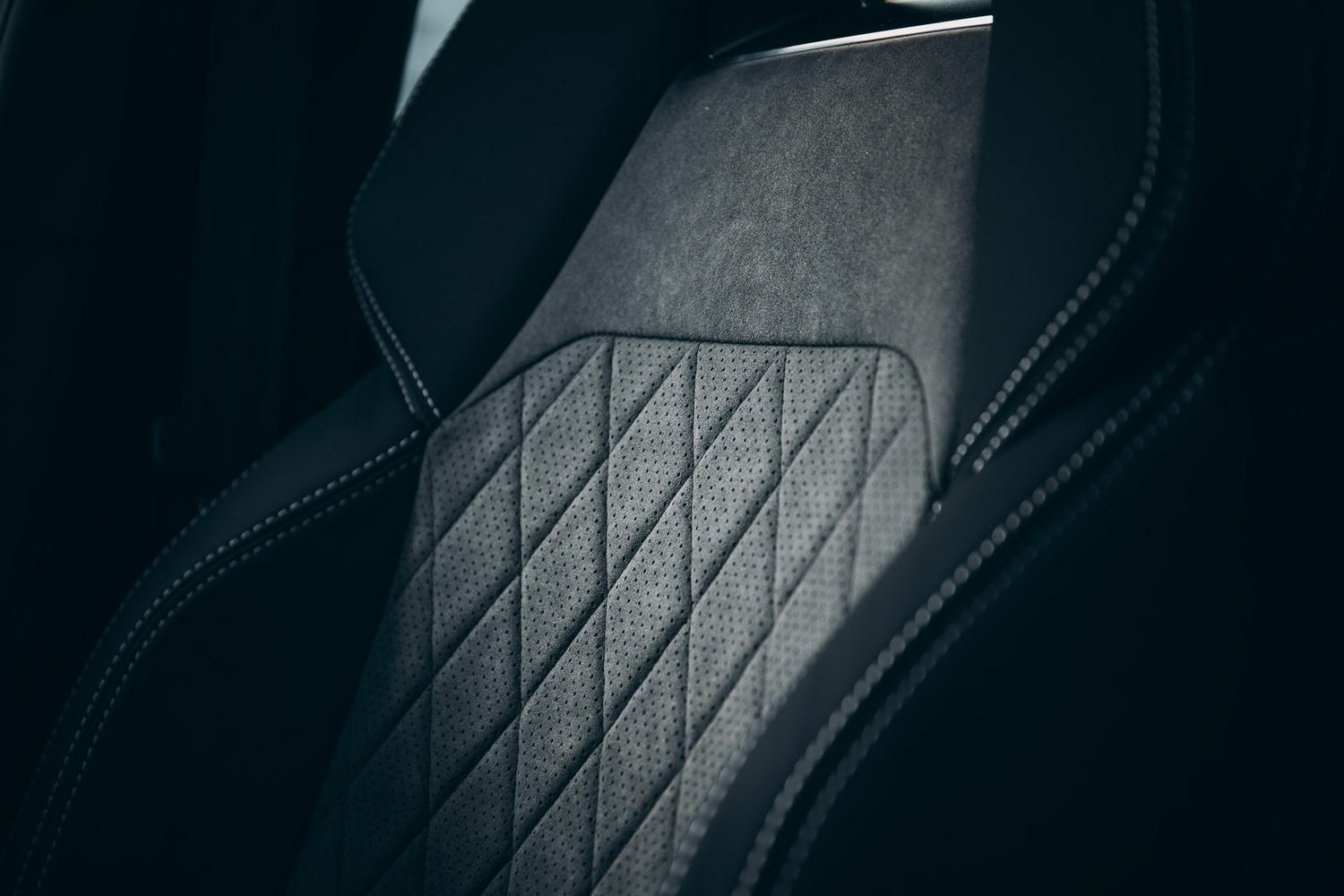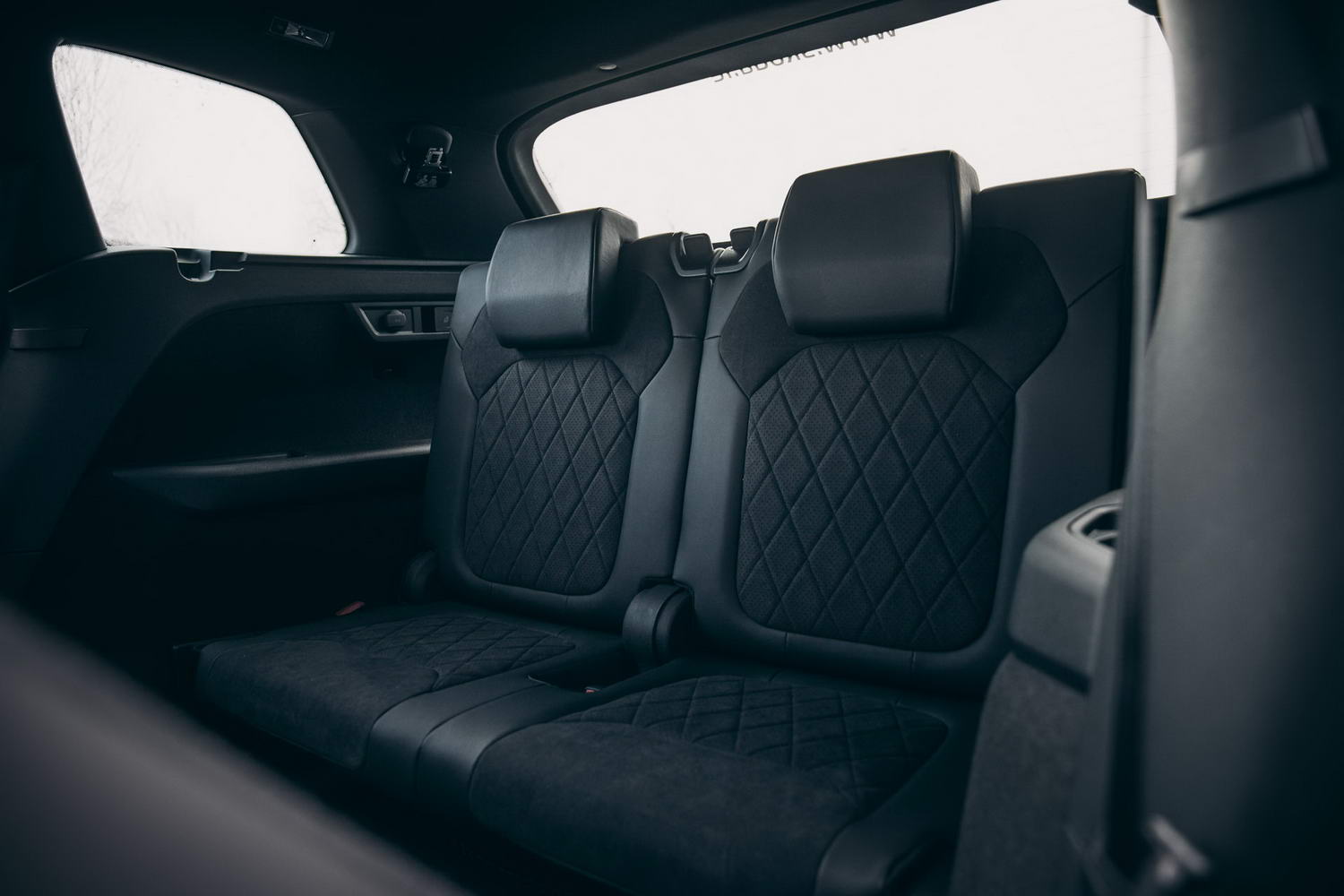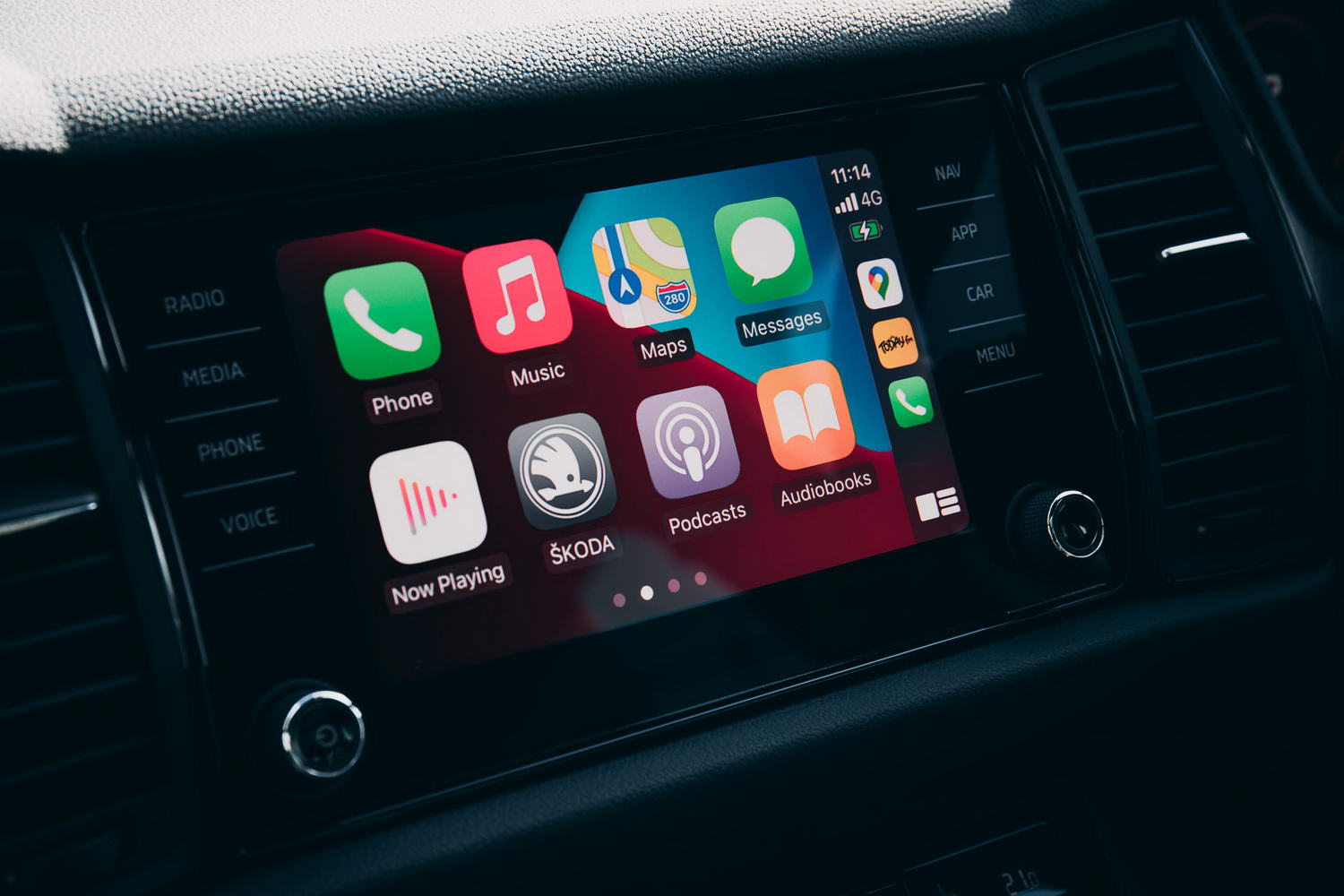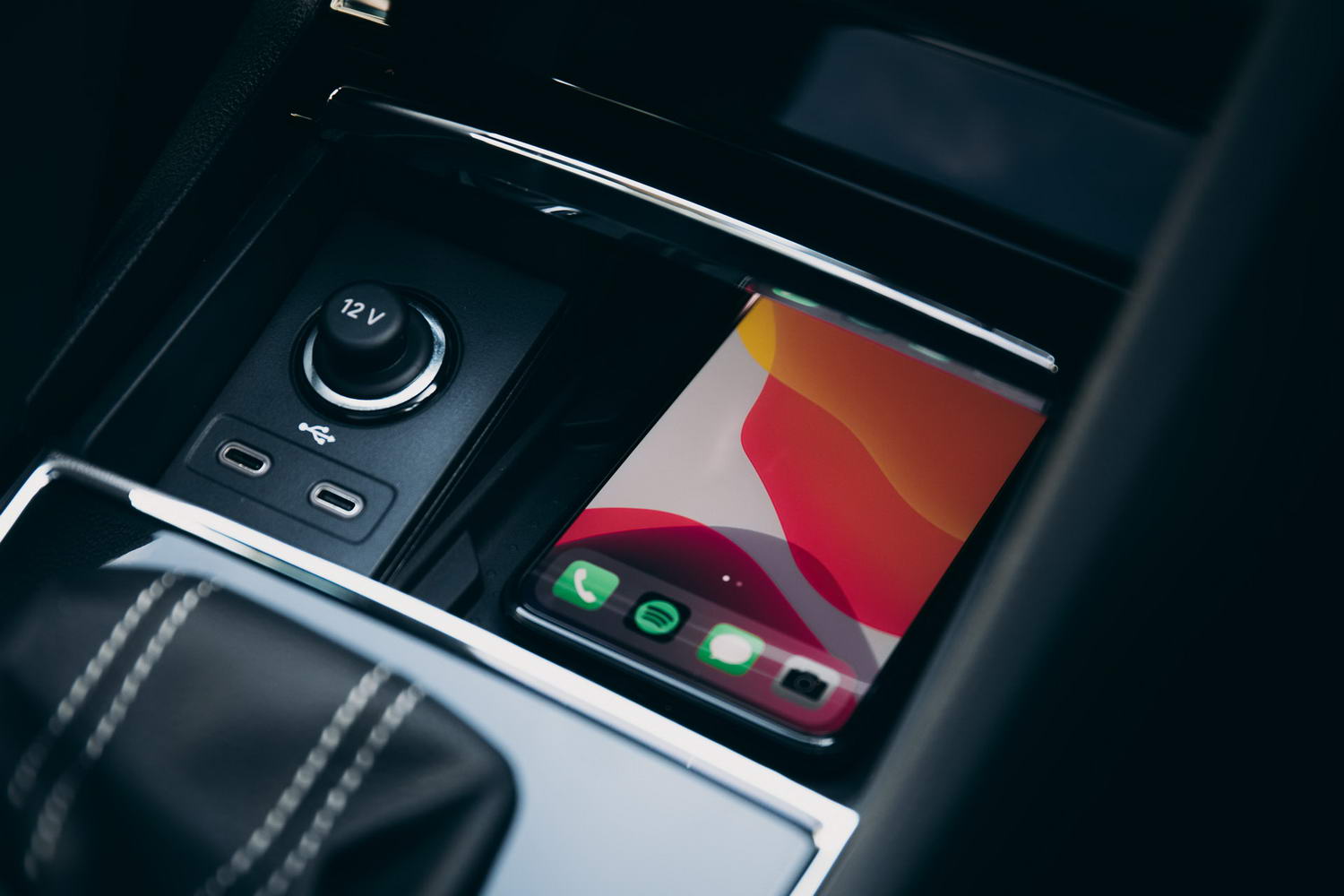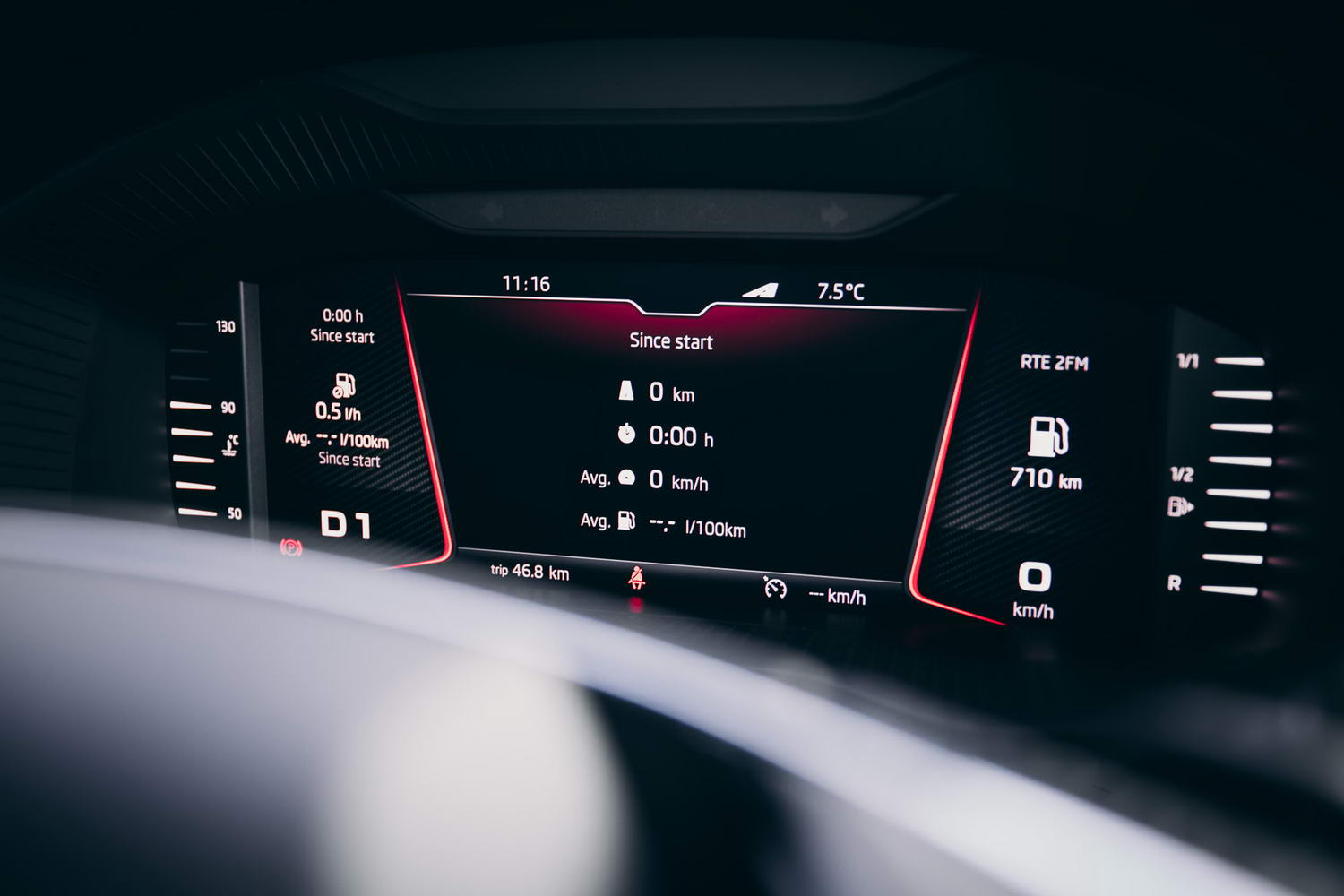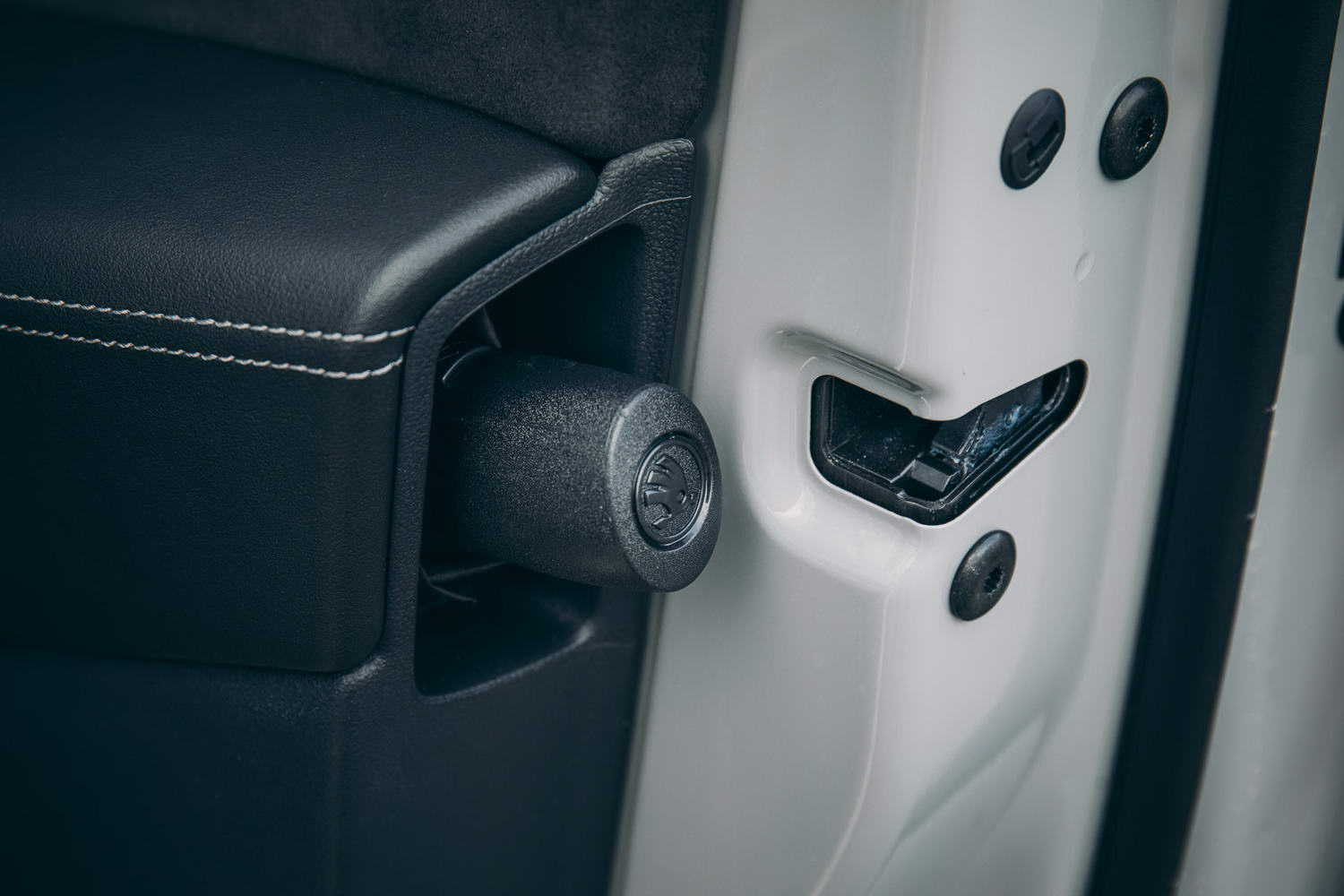Skoda Kodiaq Sportline overview
From here on out, we're going to refer to the Skoda Kodiaq as the Skodiaq. Named for an Alaskan bear (with the Q being taken from the native Alutiiq language from northern Alaska), the ursine reference seems appropriate, because the price tag of this one makes for grizzly reading...
Other than that, this is a chance to try out the updated 2.0-litre TDI diesel engine in its range-topping 200hp form, and to note that, while the Skodiaq does have a mid-life facelift on the way (new grille, lights, and some interior tweaks) there's probably not enough in that update to necessarily put you off buying one right now.
However, there are two questions to answer. Is it worth swerving away from the incoming (and, in fairness, more or less sold out for 2021) Skoda Enyaq iV electric crossover so as to have the Skodiaq's extra rear seats (the Enyaq is a five-seater). And, can this Sportline model ever actually live up to that €60k+ price tag?
The Skoda Kodiaq model range
In fact, the Skodiaq [Stop that now, it's tiresome - Ed] has been getting steadily more expensive since it was first launched. Back when it was introduced in 2016, the Kodiaq's starting price, in five-seat form, dipped just below €30,000. Now, the base price is €35,475, thanks to a combination of changes in taxation and extra standard equipment.
That base model, in Active trim, comes with the lowliest 150hp 1.5-litre TSI petrol engine and, if you want a diesel model, then you'll have to fork out €40,555 for the 150hp 2.0-litre TDI, with front-wheel drive, in Ambition trim. Want four-wheel drive? Then you'll be spending €48,135 for an Ambition 2.0 TDI 150hp Kodiaq, with the DSG seven-speed dual-clutch automatic gearbox. If you want seven seats, it's a roughly €2,095 upgrade model-for-model, although higher-spec versions, and all 4x4 models, come with seven seats as standard.
CO2 emissions range from a low of 149g/km for the most basic 2.0 TDI model to a high of 179g/km for the 200hp 4x4 DSG variant tested here. Actually, somewhat surprisingly, the petrol versions' CO2 emissions are quite reasonable, so don't discount a 1.5 TSI Kodiaq out of hand.
If you're buying on finance, a basic Active 1.5 TSI Kodiaq will set you back €383 per month on PCP finance, assuming a €10,695 deposit and a final payment of €13,262. On hire purchase, with the same deposit, you're looking at €730 per month, over three years. On the same PCP, with a €17,000 deposit, our top-spec test car would cost you €551 per month. All those prices are correct at time of writing, but do check out the Skoda Finance Calculator skoda.vwfsi.com for live pricing and offers.
Standard equipment on base Active models includes a full set of airbags (including a driver's knee airbag), emergency autonomous braking with pedestrian detection, an automatic emergency calling system, two-zone air conditioning, cruise control and speed limiter, rear parking sensors, a 6.5-inch colour touchscreen infotainment system, Apple CarPlay and Android Auto connectivity, DAB radio, 17-inch alloy wheels, LED daytime running lights and a leather-wrapped steering wheel.
Our Sportline test car came with a lot of kit to help justify that lofty price tag, including 20-inch alloy wheels (a €1,034 option), the 'Family Pack' that includes rear sun blinds, electronic child locks and little flip-out door-ding protectors, the €610 digital instrument panel, a wireless phone charger, three-zone climate control, an eight-inch touchscreen infotainment system, high-back sports seats with a suede-like upholstery and heating, a heated steering wheel, lashings of imitation carbon-fibre trim and a rear-view camera.
The Skoda Kodiaq Sportline interior
All of those glossy add-ons do definitely lift the Kodiaq's interior, which can otherwise look and feel rather plain. I mean, having a contrast-stitched, flat-bottomed steering wheel in a big, family-friendly, seven-seat SUV might be a touch ridiculous, but it still feels good to hold, so that's nice. Those high-backed bucket front seats are also excellent, wonderfully comfortable and wonderfully supportive on a long drive.
You can spot the Kodiaq's age in some of its switchgear, and it's one of those cars that puts the central cupholders behind the gear-selector, so don't go putting any tall bottle in there (the spacious door bins are the place for those, of course). That central cupholder spot is rather more than it appears at first, with a moveable, reversible rubber mat that comes with little notches and spaces cut into it, so that it firmly grips items such as car park tickets, credit cards, toll tags and much more. There's also a second, upper-level glove box hidden behind a vast faux-carbon-fibre panel in front of the passenger and, combined with the big, deep storage box under the adjustable centre armrest, there's a lot of very practical storage space in the Kodiaq's front cabin.
In the rear, there's simply a lot of space. Even with those big, bulky front bucket seats, there's more than generous kneeroom for rear seat passengers, and lots of headroom too. Kids will love the simple, flat window line of the Kodiaq, as it affords a great view out, and there's space for three people to sit comfortably across the rear (allowing for the small transmission hump in the middle of the floor), although, rather disappointingly, there are only two ISOFIX points, one in each outer rear seat (and a third in the front passenger seat).
The rear seats do split, fold and slide individually though, which of course gives access to the folding third row. These are decent seats, with just about enough room for a fully-grown adult to get in there and get comfy, albeit arguably not for a long journey (plus they'll need to be a touch athletic to get themselves in and out as the door openings aren't all that big). With all seats in use, there's still 270 litres of boot space remaining, and a vast 765 litres (under the luggage blind, which stores neatly under the floor when you don't want it) to play with when the rearmost chairs aren't needed.
This level of sheer cubic-capacity practicality is surely the Kodiaq's primary calling card. Fold all the seats flat and you get a van-like 2,005 litres of cargo space, plus 75kg of weight on a roof-rack, if needed.
Up front, you get two USB-C sockets, plus the optional wireless recharging pad. There's also a 12-volt socket, and another for the back seats (plus the rear seats in this one get their own temperature controls).
The Kodiaq certainly compares well with its immediate stablemates, the SEAT Tarraco and the VW Tiguan Allspace when it comes to roominess, and I reckon the slightly blockier rear styling liberates a few extra millimetres of headroom for those third-row seats. The closest rival, in terms of space, is the Peugeot 5008, but that is actually a significantly more affordable car.
The Skoda Kodiaq Sportline driving experience
Now that the RS model has been, temporarily, removed from the Skoda Kodiaq price list, this Sportline is the standard bearer for that most pointless of vehicle models, the sporting seven-seat SUV. I mean, honestly, if that's not an oxymoron, I don't know what is.
While it's not as much out-and-out fun to drive as the old diesel RS, the Sportline actually does deport itself very well on-road. While those big 20-inch wheels do firm up the ride quality, they don't wreck it entirely, and the Kodiaq has a rather pleasant sense of being tightly tied down, but without ever falling on the wrong side of the 'harsh' line.
Equally, it's a little keener through the corners than you might expect from something this big and bluff, but without that last nth degree of involvement (and, frankly, disbelieving hilarity) that you got with the old Kodiaq RS. Overall, it's a pleasant thing to drive, the kind of car in which you can knock off a long haul and not necessarily want to get out of at the end.
In spite of some pretty thick windscreen pillars, all-round visibility is decent (although the big, optional, panoramic glass roof can sort of trick you into thinking that it's better than it really is), but you'll appreciate the parking sensors and reversing camera when you're in tight city centre spots.
The big digital instrument panel is crisp and clear, and looks appropriately expensive, and if the central infotainment screen is, technically, a step behind the state-of-the-art, to be honest you'd not really notice it, and actually it seemed a little less fiddly and a little clearer to use than the Volkswagen Group's latest touchscreen software. The rotary dials for the air conditioning are a big improvement on the awkward touch-sensitive controls essayed by others, too.
As for the engine, in previous generations, it was generally not worth the money to trade up from the 150hp 2.0-litre TDI engine to the 190hp version. Even with an extra 40hp it just didn't feel like it made enough difference. Now, with a mere 10hp extra (and the same 400Nm of torque as before), there is most definitely a difference. The new 200hp TDI engine is smoother and quieter, and has lost that slight sense of low-rpm 'gluey-ness' that made the old 190hp engine feel even more reluctant than it was.
Performance feels appropriately muscular, and refinement has definitely improved. It's still not what you'd call a full-on performance car, of course, but a 7.8-second 0-100km/h time is not to be sniffed at, and it's certainly got enough grunt for family hauling and trailer towing. The seven-speed DSG gearbox is more or less as good as it's ever been. The low-speed hesitancy that has blighted it of late seems to have been mostly ironed out, and if it's not quite as responsive as the best eight-speed automatic systems, then it's certainly good enough.
Worth the extra over the 150hp engine? Well, possibly - if performance is specifically what you're looking for. But if you are just buying a Kodiaq for family duties, then to be honest the 150hp engine still makes a more-than-decent fist of things.
Our overall fuel consumption worked out at 7.5 litres per 100km (not too far off the official figure) and with a 60-litre fuel tank, you should be able to stretch to at least 800km before filling up again. This engine also gets the latest 'twin-dosing' version of the AdBlue system that seeks to cut the car's emissions of NOx, so while there's still no electric Kodiaq (although a plug-in hybrid is coming), at least your emissions conscience can be kept, relatively, clean.
Alternatives to the Skoda Kodiaq
With no hybrid option, the Kodiaq is leaving itself vulnerable to the likes of the new Kia Sorento PHEV and the new Hyundai Santa Fe, which uses the same platform and plug-in hybrid powertrain, and which is arriving on the Irish market right now. These are both exceptionally talented rivals, and well-priced too.
Obviously, the Kodiaq has direct internal competition from the SEAT Tarraco and the VW Tiguan Allspace, so it's worth keeping a close eye on the prices and finance offers of all three cars if you're in the market to buy one of them. Then there's the aforementioned Peugeot 5008, which also lacks a plug-in hybrid option, but which is very good value for money, even (especially) compared to the Kodiaq, and which comes with seven seats as standard.
Mind you, at this price level, it's also worth pointing out that the Kodiaq is coming in vastly cheaper than the likes of the Land Rover Discovery Sport in a model-for-model sense.
Our verdict on the Skoda Kodiaq Sportline
The lack of a hybrid option does make the Skoda Kodiaq, for the moment, feel a bit old-fashioned, and the sensation of driving around in a big diesel, however relatively efficient it may be, seems equally so. For all that, though, the Kodiaq is a hugely likeable, even a charming car with immense practicality, excellent build quality and a better-than-you'd-expect driving experience. You should probably find a more affordable version than this one, though.
What do the rest of the team think?
You get what you pay for in the Skoda Kodiaq range and, if you want a powerful diesel engine, four-wheel drive, the seven-seat layout and the undeniably appealing Sportline specification, then you're going to have to pay for it. Nonetheless, if you've got over €50,000 to spend on a seven-seat SUV, there are other options we'd steer you toward instead. However, if you're willing to do without some of those things, the Kodiaq still makes for a brilliant family car, and it's far better value further down the range than this all-singing, all-dancing model.
Shane O' Donoghue - Editor

